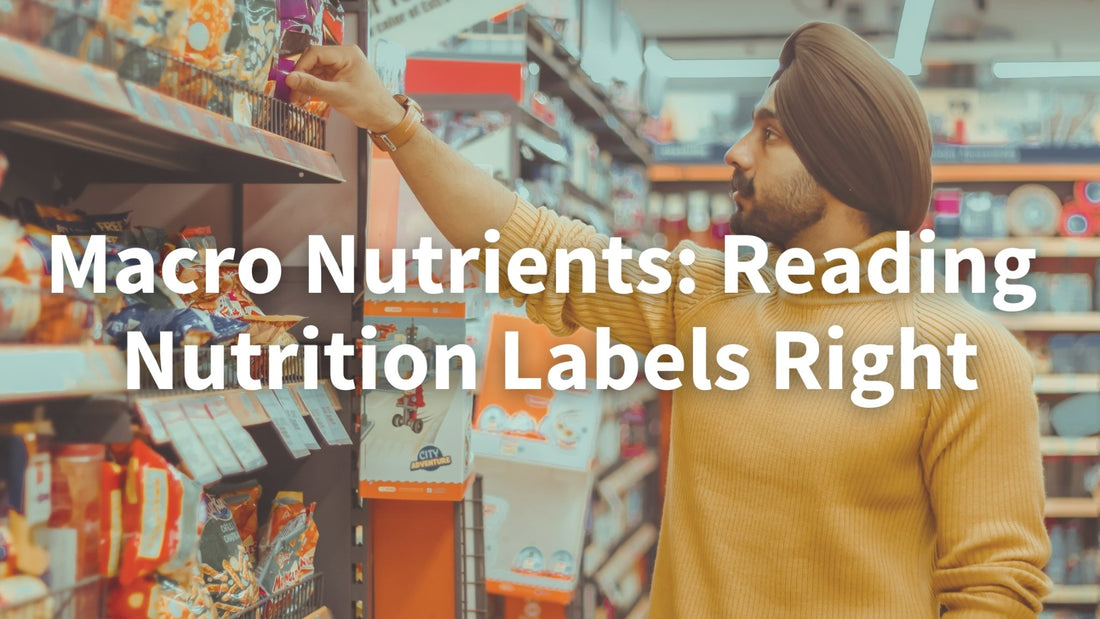With the popularity of the keto diet, many products claim to be “keto-friendly” or “low in carbs.” But how do you know if it’s really low enough in carbs for a keto diet?
The best way to tell is by reading the label and understanding how macro-nutrients work together.
Let's dive into what you should look for when checking food labels to make sure they are truly keto-friendly.
Fat Content
Fat is an essential part of the ketogenic diet and should make up at least 70% of your daily caloric intake.
When looking at a food label, aim for foods with a high-fat content (at least 15 grams per serving) and low carbohydrate content (less than 5 grams). It is also important to check what type of fat is being used.
The majority of fat should come from healthy sources such as monounsaturated fatty acids (MUFAs), polyunsaturated fatty acids (PUFAs), and omega-3 fatty acids. Avoid products with trans fats, hydrogenated oils, or saturated fats such as palm oil or coconut oil.
Protein Content
The protein content in a product should be kept moderate; aim for 10-15% of your daily caloric intake from protein sources.
Protein provides essential amino acids that our bodies need but too much can cause an insulin spike which will kick you out of ketosis.
When reading the label, choose products with around 5-7 grams of protein per serving and avoid processed meats such as bacon, hot dogs, and sausages as they typically contain added sugar and preservatives that can sabotage your keto journey.
Carbohydrates Content
Carbs are limited on the ketogenic diet so they should be less than 5% of your daily caloric intake.
This means that foods labeled “low carb” may still not be suitable for someone following a strict ketogenic diet since they must stay below 50 g net carbs per day (total carbs minus fiber).
When checking food labels, look for foods with less than 5 of net carbohydrates per serving and avoid ingredients such as wheat flour, honey, cornstarch, maltodextrin, cane sugar (or any form including Sucrose or Dextrose), etc., as these are all forms of carbohydrates that can add up quickly if you're not careful!
How to Read a Nutrition Label on the Keto Diet?
Check The Serving Size
The first thing you should do when looking at a nutrition label is to look at the serving size listed at the top; this will help you determine how many carbs are in each serving.
For example, if you're eating something that has 2 servings per container and 10 grams of carbs per serving, then by eating the whole container you'd be consuming 20 grams of carbs total.
Knowing this ahead of time can help keep your carb intake within your desired range.
Calculate Net Carbs
A good way to calculate net carbs is to subtract the grams of dietary fiber from the total grams of carbohydrates in food.
For example, if a food has 20 grams of carbohydrates and 5 grams of dietary fiber, then the net carbs would be 15 grams.
Dietary fiber is not absorbed by the body and therefore does not raise blood sugar levels.
Check Out the Macronutrient Ratio
After getting an idea of how many calories are in each serving size, check out how much protein, carbohydrates and fat are present in each serving size.
Aim for a 2-to-1 ratio of fat-to-protein and aim for less than 10% carbohydrates per serving size (or 5% if following a strict keto diet).
Watch Out For Added Sugars And Sweeteners
Another thing to pay attention to is added sugars or sweeteners—these can quickly add up and push away from ketosis if consumed in excess.
Added sugars are often found in processed foods like condiments or dressings so make sure to look out for these when grocery shopping or preparing meals.
Ingredients to Watch Out for On a Keto Diet
Artificial Colors and Flavors
Certain artificial colors and flavors can be detrimental to your health if consumed in large amounts. Many of these additives are not just unhealthy, but also interfere with the absorption of essential nutrients like vitamins and minerals.
Some of the most common artificial colors and flavors used in processed foods include Yellow 5, Red 40, Blue 1, Natural Flavoring, Monosodium Glutamate (MSG), High Fructose Corn Syrup (HFCS), Potassium (Ace K), and Sodium Benzoate.
Harmful Additives
Many processed foods contain additives such as preservatives and emulsifiers that can be harmful to your health.
These include sodium nitrite, polysorbate 80, carrageenan, propylene glycol alginate (PGA), potassium sorbate, sodium benzoate, BHA/BHT (butylated hydroxyanisole/butylated hydroxytoluene).
All of these should be avoided when shopping for food items for a ketogenic diet.
Harmful Non-Caloric Sweeteners
Non-caloric sweeteners may seem like a great way to add sweetness without adding any calories or carbs to your meal plan — however, this isn't always the case!
Many non-caloric sweeteners such as sucralose (Splenda), acesulfame potassium (ace k), neotame, saccharin, aspartame, advantame, and cyclamate have been linked to various negative health effects including increased inflammation levels and disruption of gut bacteria balance. It's best to avoid these sweeteners entirely while on a keto diet!
Closing thoughts
Reading nutrition labels when following a specific diet can seem daunting at first—but with some practice, it becomes much easier!
To ensure that you get all of the essential vitamins and minerals while still staying within your macro goals on a keto diet, make sure to check serving sizes carefully along with dietary fiber content and added sugars or sweeteners.
Also, pay attention to any artificial additives present in packaged foods; avoiding these whenever possible will help minimize inflammation throughout your body.
With these steps in mind, now go forth and enjoy reading nutrition labels like an expert!
References

